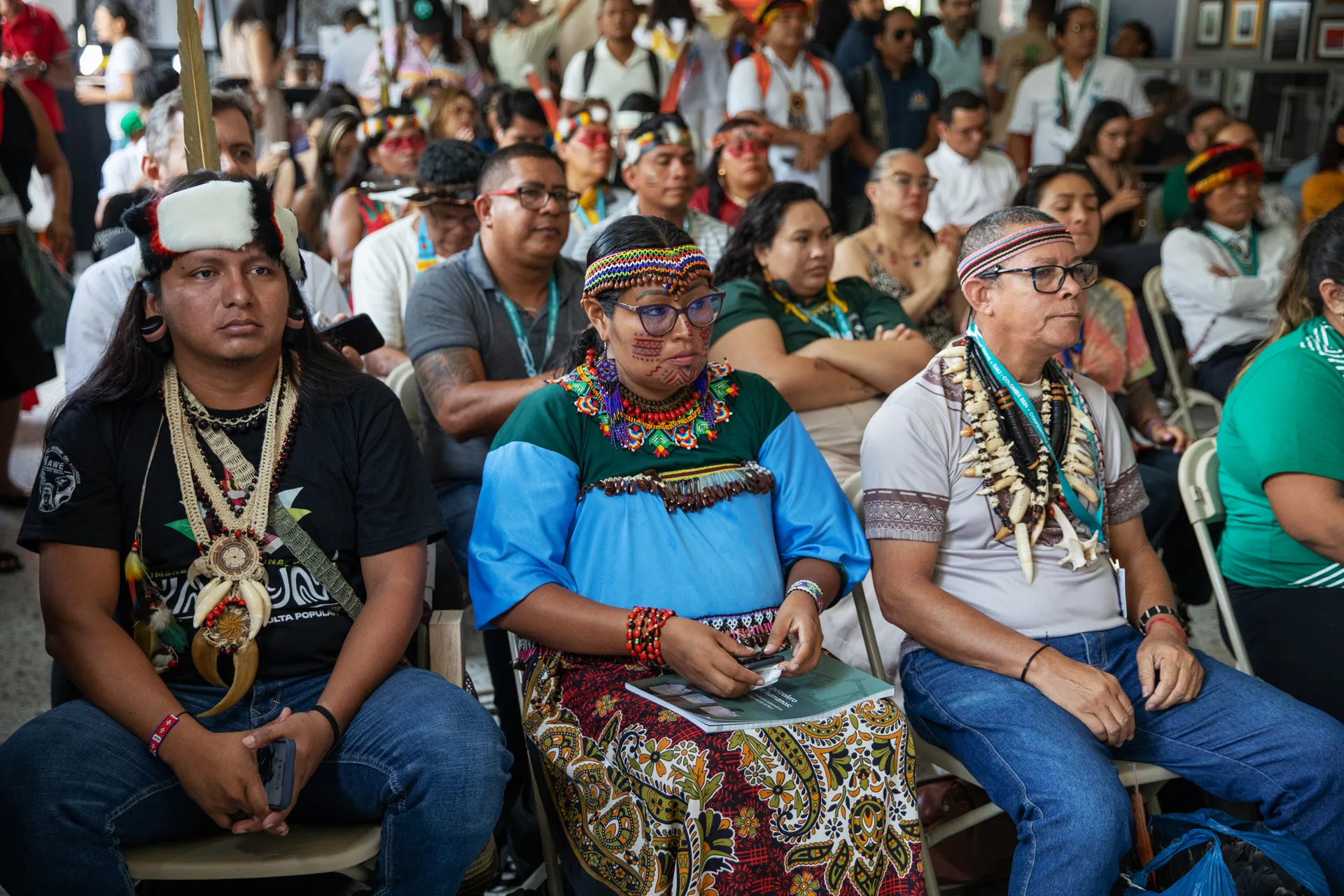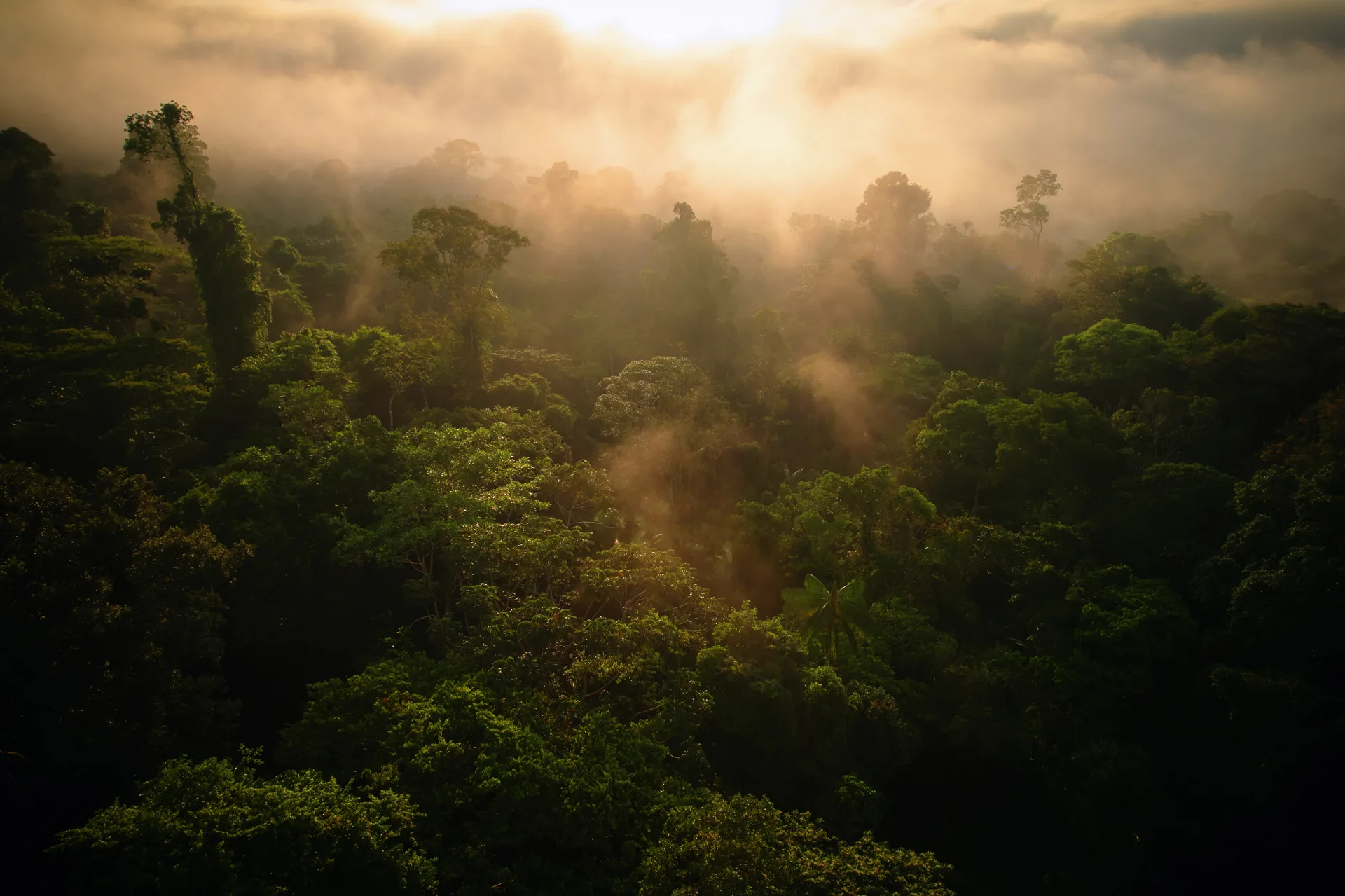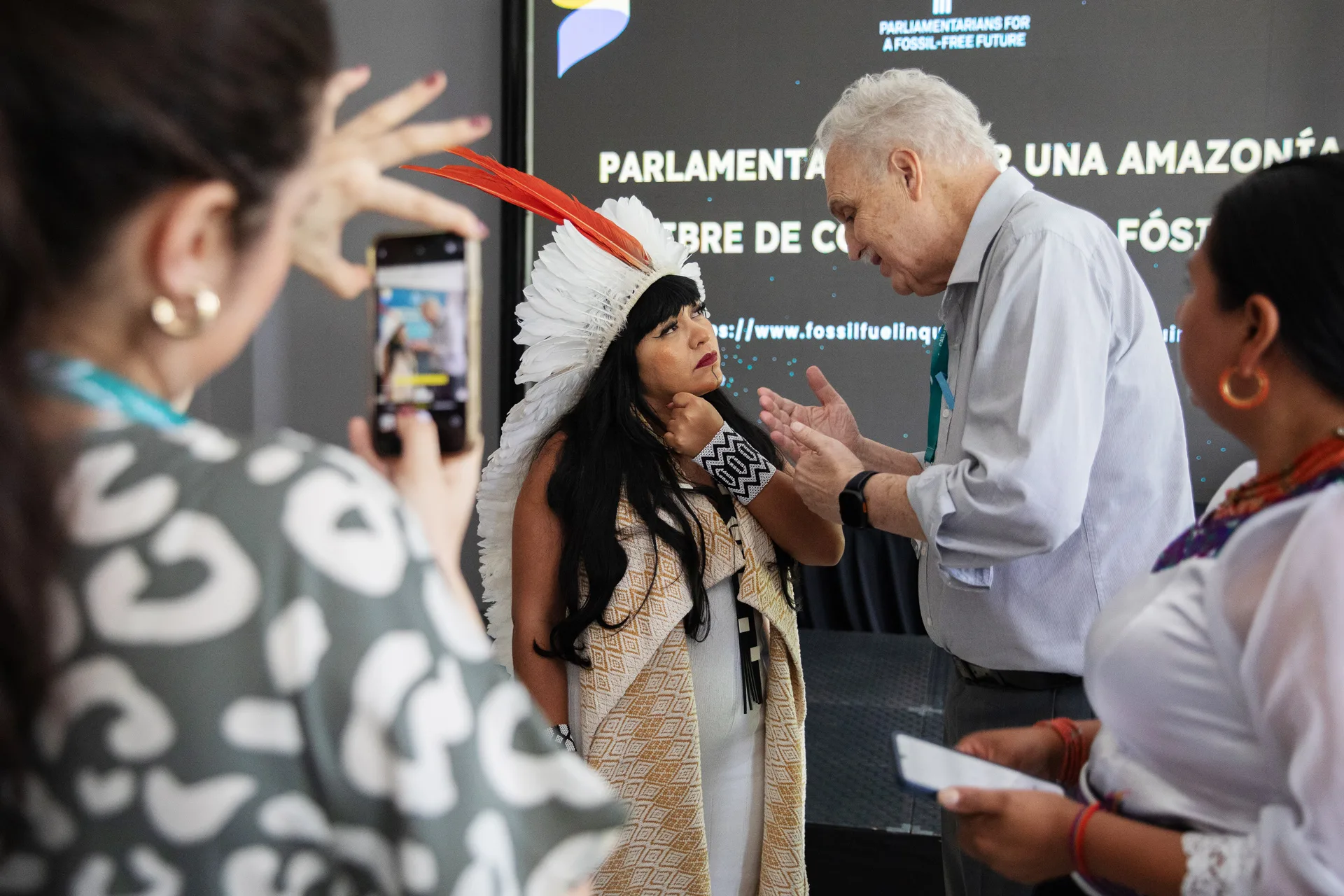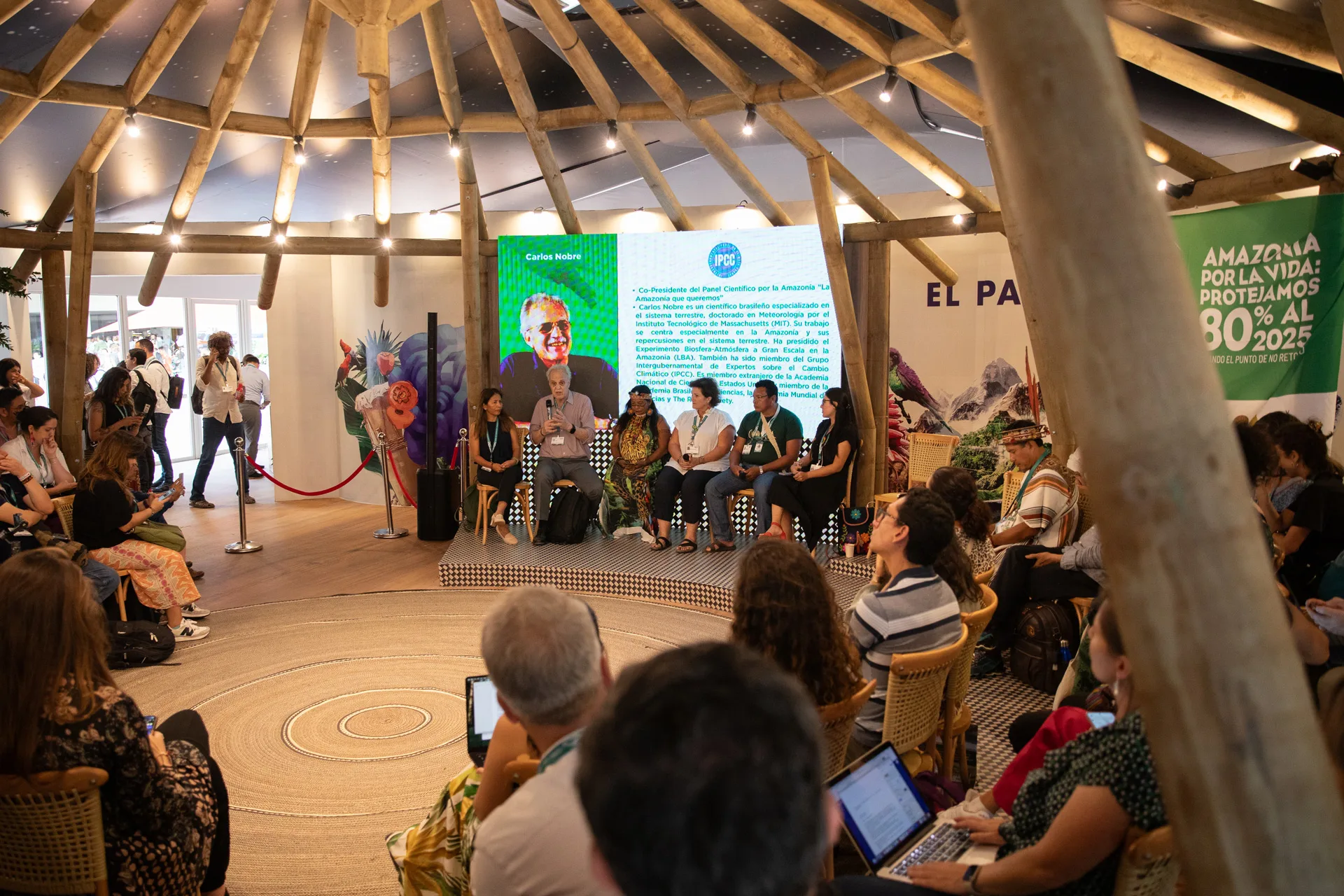“Why didn’t we listen to Vespucci? Everything would have been different,” jokes scientist Carlos Nobre, drawing laughter from a group of business people attending his talk at the 16th UN BiodiversityConference, or COP16. Nobre was referring to Italian navigator Amerigo Vespucci, who came ashore in Guanabara Bay on the southern coast of Brazil in 1502. Vespucci appreciated the natural beauty of the Atlantic Forest and saw value in local customs and habits, without pondering the marketability of the rainforest. The vision that prospered, however, was not Vespucci’s but that of Portuguese official Pero Vaz de Caminha, who had reached the southern coast of Bahia two years earlier in the company of Pedro Álvares Cabral and alerted the Crown to the tremendous commercial potential of these lands. But the audience’s laughter soon gave way to frowns when Nobre, a leading world expert on climate change and the Amazon, continued. “Today, around 18% of the original 6.5 million square kilometers of Amazon rainforest have already been deforested, while another almost 17% are in various stages of degradation. Think how worrisome this is, because one hectare of the Amazon holds some 350 species of trees, more than the entire European continent,” he told his rapt listeners.
At 73 and with more than half his life dedicated to studying the impact of human action on the climate and on one of the world’s most biodiverse forests, Nobre seems used to attentive and engaged audiences. For some time now, the researcher has been a bit of a rockstar in the scientific world, and a short stroll alongside him down the halls of COP16, in Cali, Colombia, makes this clear. Nobre is often stopped by someone who wants to take a selfie, tell him about a project, invite him to give a talk, or just say they admire his work. The scientist doesn’t shrug anyone off. Instead, Nobre listens attentively and even smiles briefly for photos. But his expression soon grows troubled again—as it has been for decades now.
Author and co-author of more than 150 scientific papers demonstrating the impact of human action on the climate and the Amazon through images, numbers, and projections, his brow is furrowed because he knows that when the topic is the mathematics of the environmental crisis, the figures don’t add up. Back in the 1990s, Nobre was among the first researchers to warn about the risk of the Amazon reaching the point of no return, that is, the moment when the forest loses its capacity to regenerate after it has been disturbed. Since then, he has published studies showing that this moment is drawing closer and closer. “We have recent projections leaving no doubt that the Amazon is at the edge of the cliff,” he says.
A former member of the Intergovernmental Panel on Climate Change (IPCC) and the first Brazilian scientist to be admitted to the elite Royal Society—the oldest continuously existing scientific academy in the world—Nobre recently made the front pages across Brazil after he declared in an interview that he was “terrified.” “I said that because I truly am terrified about the climate crisis and the direction we’re taking. The world is approaching a temperature rise of 1.5°C compared to the 1850-1900 period even earlier than science predicted, which was 2028. If nothing changes, by 2050 we’re going to see a 2.5°C rise in temperature in comparison with the preindustrial era —and that’s planetary suicide. We’re going to lose the Amazon and trigger a huge extinction of species. It will be ecocide,” the researcher says as he sips a cup of coffee and waits for the next talk. “But I wouldn’t be working 12 hours a day, every day, if I didn’t believe we still have a chance to turn this around.”
To offer readers insight into the thoughts, questions, and motivations of a terrified climate scientist at a biodiversity conference, SUMAÚMA spent an entire—and intense—day at COP16 with Carlos Nobre.

Participando ativamente da COP, Nobre acredita que ainda há uma chance de os países mudarem o rumo em relação à destruição da biodiversidade e ao aquecimento do planeta. Foto: Christina Noriega/SUMAÚMA
The climate-biodiversity link
It’s not even six in the morning on October 25, the fifth day of the conference, and Carlos Nobre is already on his feet, getting ready for another jam-packed schedule. His outfit always consists of a dark suit, striped shirt, and dress shoes, with subtle color changes from day to day. His digital wristwatch beeps frequently, notifying him of new messages, calls, and emails. Slung over his shoulder is a heavy backpack containing a computer, books, and documents. The hotel where the researcher is staying, along with a team of more than ten, is located some 45 minutes from Cali, host-city for the UN conference. The accommodations are quite basic—several rooms don’t have hot showers—but Nobre doesn’t complain. He came here intent on pushing forward the discussion on how to guarantee a possible future for his two grandchildren, aged 12 and 13, and for the rest of the planet’s young people. But when he climbs into the diesel van that will take him to the conference, something bothers him. “We’re in a van that’s releasing about two kilos of CO2 into the air right now. This is going to remain in the atmosphere for 150 years on average; 15% of it might stay up to a thousand years. If things go on like this, the planet will be almost uninhabitable by the end of the century.”
This is the second time Nobre has attended a biodiversity conference. A long-time regular at climate COPs, he recently began viewing biodiversity gatherings as opportunities to introduce into multilateral negotiations a topic science has long warned about: the tight link between climate and biodiversity. “In the 1990s, the Amazon was removing more than 1.5 billion metric tons of CO2 from the atmosphere every year, and now the forest is turning into a source of carbon. If the climate continues to heat up and degradation maintains the same pace, in 50 years’ time we may lose up to 70% of the forest. This will wipe out the greatest biodiversity on the planet, while releasing 250 or 300 billion metric tons of CO2 into the atmosphere, making it much harder—if not impossible—to hold the temperature rise to 1.5°C,” he says.
In addition to hosting dozens of conversations on climate and biodiversity, COP16 is bringing key issues to the negotiating table, opening the way for effective enforcement of the Kunming-Montreal Global Biodiversity Framework. Signed in 2022, this strategic plan defined four targets for 2050 and 23 for 2030. Among the main targets are the conservation of at least 30% of terrestrial, inland water, marine, and coastal areas, the restoration of 30% of all degraded ecosystems by 2030, and the mobilization of financial resources that will allow implementation of these plans by the most biodiverse countries, mostly located in Latin America, Africa, and Asia. On this last point, during the two-week conference there is also intense mobilization of members of Indigenous peoples and local communities to include them in the discussions, with a view to ensuring they have direct access to resources for preservation. “I’ve been impressed by the number of Indigenous people at the conference, and this is essential because Indigenous women are the real scientists. They are the holders of knowledge about the forest’s biodiversity. It is of utmost importance to consider Indigenous peoples and local communities in these decisions, since they play a central role in the global carbon cycle, hydrology, and the maintenance of cultural and ethnic diversity,” the researcher says.

Plateias como a da COP-16 ficam atentas às falas de Nobre sobre a Amazônia. O pesquisador é uma espécie de rock star do universo científico. Foto: Christina Noriega/SUMAÚMA
Nobre is attending COP16 as representative of the Science Panel for the Amazon (SPA), an initiative of the United Nations Sustainable Development Solutions Network (SDSN), a group he has co-chaired since its foundation in 2019. The network, which currently has 288 members—68% from Amazonian countries, including 13 Indigenous scientists—evaluates scientific production about the entire Amazon basin and its biomes. This is just one of several Amazon projects Nobre takes part in. With a degree in electronic engineering from Brazil’s Technological Institute of Aeronautics (ITA) and a doctorate in meteorology from the Massachusetts Institute of Technology (MIT), Nobre says his passion for the rainforest began when he was young, under the influence of his father, once a professional soccer player. “My father loved soccer and also Nature. He sparked these two passions in me at an early age. I remember when I was 12, he took me about four hours into the Atlantic Forest, near the seaside town of Itanhaém on the southern coast of São Paulo state, at a time when nearly 80% of this forest had already been destroyed across Brazil. It marked my life,” he says. However, back then Nobre thought he was destined to follow in his father’s footsteps. “From the age of five, I was trained to play soccer, and I was pushed in the direction of this career. I loved the sport and was really good at it, but life is curious, and I became a scientist by chance. Thank goodness,” he says. Then another researcher in the van interrupts him to say, “We’ve arrived at the first event.”
Crime, preservation, and hope at COP16
It’s eight in the morning, and a room with seating for around 40 people is ready for the arrival of scientists and members of the Colombian government and civil society for a panel on environmental crime and biodiversity. It’s an event held in parallel to official COP negotiations, and Nobre is there as an audience member. Despite dozens of invitations to speak and meet with authorities during the conference, he still takes advantage of the few gaps in his schedule to attend these side events. Always eager to learn more, he counts on members of his team to organize his schedule and help him get around the COP16 pavilion. Right in the opening minutes of the session, one of the panelists, presenting data on the role of drug trafficking in the destruction of the Amazon, cites Nobre’s research as essential for studying crime in the forest. All eyes turn to him, and he doesn’t seem surprised. His studies are referenced all the time, even at events where he is not present.
When the presentations are over and the floor is open for questions, Nobre is one of the first to raise his hand. “Illegal drug use is increasing all over the world, including the use of cocaine. We all know this is linked to environmental crime. What are the solutions? Is it the legalization of cocaine?” he asks, sparking an important discussion about the connections between drug trafficking, the illegal land market, mining, and other crimes that take place in the world’s most biodiverse forest. “I don’t have the answer to this question, but I think we need to discuss it. It’s a big problem for the Amazon and the world. It’s a difficult discussion, but it needs to be had,” he says, leaving the room. It’s eleven, and he has to get to a scheduled talk with financiers interested in supporting a “standing forest socio-bioeconomy” project he has been developing for some years, called “Amazonia 4.0.” “The idea is to make industrial technology available so Indigenous people and local communities, using traditional knowledge, can transform raw materials into high-value-added products. This way we avoid the process of destruction that occurs, for example, when large areas of public forest are converted into privately owned agricultural production land,” he says to the funders. The meeting takes place in an open area, and everyone sweats in the intense heat. But even the strong sun can’t hamper the conversation. His listeners frantically take notes and smile, envisioning possible partnerships with the researcher.
The official schedule had designated an hour for the session, but at 12:15 Nobre continues the meeting by telling anecdotes from his life. The second of six children, he talks proudly about the careers of his siblings, most of whom are also scientists. He gives the impression that he would stay there all afternoon telling stories about science, family, and his relationship with Indigenous people, but his team calls him away for lunch since there isn’t much time until the next item on the agenda, an online debate scheduled for 12:45. Nobre heads to the makeshift food court set up in the middle of the conference pavilion. There are six restaurants, but he always goes to the same one, where he found a vegetarian option on the first day. “I used to barbecue every Sunday. But one day, in 2007, I was giving a lecture at the Federal University of São Carlos on the degradation of the Amazon when a student raised his hand and asked if I ate meat. I said yes, and he asked, ‘Do you know where the meat comes from? Does it come from a deforested area?’ I couldn’t answer, so I started researching. I spoke to supermarket managers, to suppliers; I did a lot of research, until I was told it wasn’t traceable. Since then, I’ve never eaten any kind of meat,” he says, standing in line to get food.
Interconnections and happenstance
When Carlos Nobre was 13, destiny turned him toward science. Up until then, an aspiring soccer player who had earned a place on the São Paulo Football Club children’s team, he had to give up his frequent training sessions because of a knee injury. “I grew very quickly during that period, about 13 centimeters in one year. My body couldn’t take it, and I got injured. I had to stop playing. Since I was very good at mathematics and physics, it was natural for me to go into engineering. That’s what many people did at the time. But I felt I didn’t really want to do that, and then I learned about the enormity of the Amazon. I flew over it and never came back, metaphorically,” he said.

Carlos Nobre decidiu estudar a Amazônia ainda na universidade, durante a década de 1970, depois de sobrevoar pela primeira vez uma porção da floresta. Foto: Pablo Albarenga/SUMAÚMA
An engineering professor first introduced Nobre to one of the most biodiverse forests in the world. Committed to taking future researchers to the region, the professor put a group of students on a plane that flew over part of the biome. It was the early 1970s; Nobre had recently turned 20, and the immensity of the green expanse before his eyes solidified his desire to dedicate his life to studying not only the science of that specific place but also the thousands of interconnections between human and more-than-human lives on Earth.
“One or two pandemics a decade. That’s what could happen if we don’t protect the Amazon and all the world’s rainforests. We have to add that to the balance sheet. People forget, but it’s another cost linked to the destruction of biodiversity,” he says during an online meeting with other researchers from Brazil. The day before, he had likewise warned a group from the Brazilian government that was announcing a new fund to save tropical forests. Lunch in the food court has barely finished, and Nobre is already moving to a quieter corner of the pavilion to take part in a previously scheduled virtual meeting. Sitting hunched over on a low bench, he is visibly uncomfortable but still listens attentively to the conversation taking place thousands of kilometers away. The subject is the cost and financial rewards of a preserved forest, and among the many calculations and arguments presented, a surprising one he brings up is the burden on public health. “Look at the fact that more than 85% of the energy we use worldwide comes from burning fossil fuels. This burning generates urban pollution, resulting in 6.7 million deaths a year. Everything is interconnected, and we need to consider all these points when we think about the cost of large-scale ecosystem imbalance,” he says in conclusion, thanking the organizers for the opportunity to take part in the meeting.
Phone in pocket and coffee in hand, it’s time to move on to the next meetings. For the following two hours, Nobre has quick, 15-to-30-minute conversations with members of nongovernmental organizations, business people, and government representatives. Gathering thousands in the same place and for the same cause, UN biodiversity conferences are also an opportunity to make professional contacts, establish partnerships, and develop new projects. That’s why the demand for a quick chat with the scientist is so intense. “Everyone wants a few minutes with Nobre,” jokes a researcher peeking into the room where these meetings are taking place.

Carlos Nobre conversa com a deputada federal Célia Xakriabá antes de participar de um painel sobre a Amazônia na COP-16 em Cali, na Colômbia. Foto: Christina Noriega/SUMAÚMA
Recalculating the route
As the sun begins to set, tinging the sky over Cali with orange hues, the exhaustion of those walking the corridors of COP16 is evident. Not Nobre. Still energetic, he takes a short break to eat a slice of chocolate cake and have another cup of coffee, then heads to the penultimate event of the day: a panel organized by the Colombian delegation entitled “Amazonía a Contrarreloj” (The Amazon against the clock). On stage, in addition to the Brazilian scientist, there are Indigenous people and other Latin American researchers gathered to talk about the obstacles and possible advances to be made at COP16. During his speech, Nobre is emphatic: “We have to protect all the tropical forests on the planet if we want a future. We have to have more than $100 billion, maybe $200 billion a year, to speed up the restoration of all the degraded and deforested biomes, and with that we are also fighting the climate emergency. To keep the temperature from going through the roof, we have to restore around seven million square kilometers of all biomes, and this will be very costly. That’s why the fund being negotiated at this COP is so essential. And it’s not only important that the money is made available, but also that part of it goes directly to Indigenous communities, traditional communities, and all those who protect the planet’s biodiversity,” he says to applause from the audience.
Nobre’s speech joins demands from representatives of various developing countries both inside and outside negotiating rooms, who are calling for a breakthrough in talks on financing for biodiversity during COP16. In 2022, when the Kunming-Montreal Global Biodiversity Framework was signed, the 196 original signatories committed to creating a biodiversity fund for developing countries that would accumulate $20 billion a year by 2025 and $30 billion a year by 2030. However, so far only seven developed countries have contributed a total of less than $250 million. During the first few days of the conference, many developing nations argued that they depend on the money to draw up and present their national preservation plans in order to reach agreed targets. Their plans should have been submitted by the start of the conference in Cali. So far, however, only 36 nations have done so. At this COP, Indigenous peoples and members of traditional communities are also asking for direct access to part of this fund without having to go through the bureaucracies in their countries.
On the way out of the event, a distraught Indigenous man asked Nobre about the Amazon’s point of no return. Nobre put his hand on the young man’s shoulder, gave him a brief smile, and said, “There’s still time. It’s not going to be easy, but it can be done. We have two major challenges [climate and biodiversity]: the first is to keep the temperature increase from exceeding 2 degrees Celsius compared to the preindustrial era, and the second is to quickly bring deforestation, degradation, and forest fires to zero, while also restoring one million square kilometers of forest by 2040. These two things need to happen together. This is our chance,” he told the man. Before saying goodbye, the scientist added, “That’s why I’m here, and I believe you are too. You need to keep raising your voices because you are responsible for protecting a large part of the biodiversity on the planet.”
Nobre and the researcher who is accompanying him head for the parking lot, where the same van is waiting to take them to dinner. The idea is to get some rest and take the night off, something that seems impossible for the researcher. On the way, his gaze is fixed out the window as he watches the city flit by. Nobre reflects: “For many years I was pessimistic about the future of the Amazon Forest, but there are studies that say that after the age of 65, 70, you become optimistic about the future. That happened to me,” he jokes. “But this optimism isn’t naive; it’s based on science. Today, given the direction we’re taking, things don’t add up. But there’s still time to recalculate our route.”
SUMAÚMA’s coverage of COP16 is done in partnership with the international organization Global Witness (@global_witness), which has been investigating, exposing, and campaigning against environmental and human rights abuses around the world since 1993.
This article was produced with the support of Climate Tracker América Latina and FES Transformação

Entre os temas que o cientista levou à COP, estão a proximidade do ponto de não retorno e a necessidade de financiamento para projetos de restauração da floresta. Foto: Christina Noriega/SUMAÚMA
Report and text: Jaqueline Sordi
Editing: Talita Bedinelli
Photo Editor: Lela Beltrão
Fact-checker: Plínio Lopes
Proofreader (Portuguese): Valquíria Della Pozza
English translation: Diane Whitty
Spanish translation: Meritxell Almarza
Copyediting and finishing: Natália Chagas
Editorial workflow coordination: Viviane Zandonadi
Editor-in-chief: Talita Bedinelli
Editorial director: Eliane Brum





